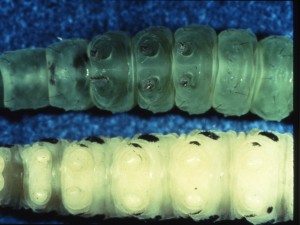–by Dr. Raymond Cloyd
We are receiving numerous questions regarding insects feeding and completely devouring rose plants. These insects are sawflies, and there are at least two species that attack roses during this time of year: the rose slug (Endelomyia aethiops) and bristly rose slug (Cladius difformis). Rose slugs are the immature or larval stage of sawflies, which are black to yellow colored wasps.
Rose sawfly females create pockets or slits along the edges of rose leaves with their saw-like ovipositor (egg-laying devise) and insert individual eggs. Larvae hatch from eggs and resemble a slug. The larvae are 1.2 cm long when full-grown and yellow-green with an orange head (Figure 1). Larvae eventually fall on the soil surface to pupate. Rose slugs overwinter as pupae in earthen cells created by the larvae. There is typically one generation per year in Kansas. Bristly rose slug larvae are pale-green and 1.5 to 2.0 cm in length. The body is covered with numerous bristle-like hairs (Figure 2). There is generally one generation per year in Kansas.
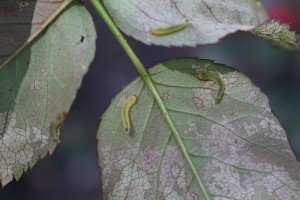
Figure 1: Rose Sawfly Larvae Feeding on Rose Leaf
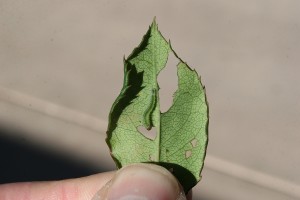
Figure 2: Bristly Rose Slug Larvae Feeding on Spirea Plant
Rose slug larvae feed on the underside of rose leaves; resulting in leaves with a skeletonized appearance (Figures 3 and 4) and eventually they create notches or holes on the leaf margins. Bristly rose slug larvae feed on the underside of rose leaves and also cause leaves to appear skeletonized. However, the larvae may chew larger holes than the rose slug.
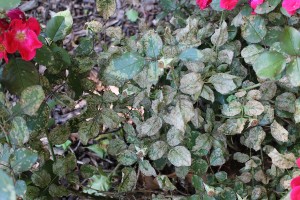
Figure 3: Damage on Rose Plant Caused by Rose Slug
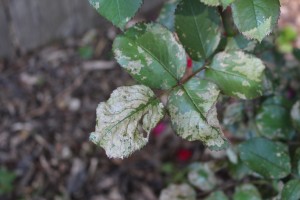
Figure 4: Damage on Rose Leaf Caused by Rose Slug
Small infestations of either the rose sawfly or bristly rose slug can be removed by hand and placed into a container of soapy water. A forceful water spray will quickly dislodge sawfly larvae from rose plants and they will not be able to crawl back onto rose plants. There are a number of contact insecticides with various active ingredients that are effective in suppressing populations of both sawflies. However, the bacterium, Bacillus thuringiensis subsp. kurstaki (sold as Dipel or Thuricide) will have no activity on sawflies as this compound only works on caterpillars.
